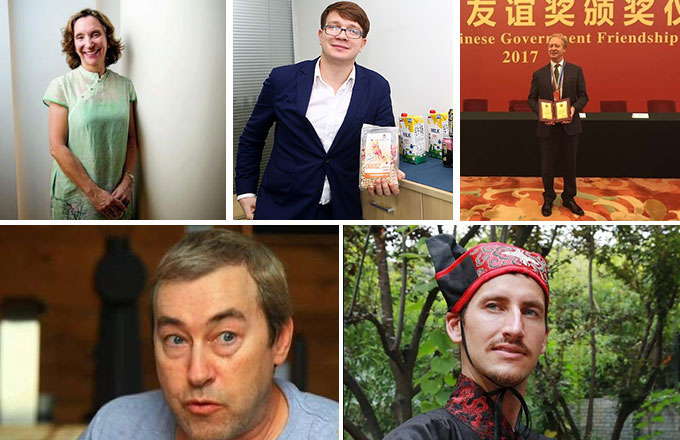The tea thief
Espionage, the East India Co, and the secrets of tea in the shadow of the Opium Wars
In the mid-17th century, tea found its way to the coffeehouses of London, and by the mid-18th century, the drink was so widespread that Chelsea began manufacturing imitation Chinese tea ware. The famous English "afternoon tea" is a product of the 1830s, more specifically of Anna Russell, the Duchess of Bedford. For more than 200 years, the British were obsessed with tea - all without knowing how it was made or exactly what it was made from.

Much like silk, the secret of tea was a closely guarded secret in China, a staple almost unparalleled in the history of trade. In England, botanists argued vociferously over already dried breeds of tea, claiming that black tea and green tea obviously came from different plants. This was far from scientific thinking, as no European botanist had ever gotten their hands on living tea plants to study, much less understood the arduous process by which it was made.
It was Robert Fortune, the first to visit China as the Royal Horticultural Society's collector, who put the argument to bed. Rather than coming back with tales of orchids and shrubs, Fortune came back from his trip in 1842 with tales of vicious pirates on the Yangtze River, hateful anti-foreigner mobs, and a flurry of other adventures that took England by storm in his book, Three Years' Wanderings in the Northern Provinces of China.
Lapsing into what today sound like baseless, racist diatribes on the character of the Chinese, he certainly had an odd love for the Middle Kingdom. He wrote: "All along the coast, at least as far as (Zhejiang province), richly deserve the bad character which everyone gives them; being remarkable for their hatred to foreigners and conceited notions of their own importance ... are nothing less than thieves and pirates. But the character of the Chinese as a nation must not suffer from a partial view of this kind."
He traveled through Guangdong, Zhejiang and Fujian provinces to build his theory. The science of the time split black and green tea into two types: Thea bohea and Thea viridis. However, Fortune's studies yielded a stunning discovery. He explained in his book: "Those who have had the best means of judging have been deceived, and that the greater part of the black and green teas which are brought yearly from China to Europe and America are obtained from the same species."
Because of him, the taxonomy changed - from the Thea bohea and Thea viridis to something new: Thea sinensis, literally tea from China. The difference, it was discovered, was a minor change in the creation process, nothing more.
His discovery, studies and gunfights with pirates also yielded the important fact that Chinese teas from Guangdong province were dyed. Europe and the United States at the time enjoyed what they thought was the natural color of tea in water, calling it a "beautiful bloom" of color. Fortune discovered that these effects were made with a type of paint known as Prussian blue (iron ferrocyanide) to suit the tastes of the foreign "barbarians", essentially making green tea greener.
His writings, which would soon become popular around England, seem to embody the mystical, tragic heart of the explorer. In referring to attempts to understand and explain China, he says: "We were in the position of little children who gaze with admiration and wonder at a penny peep-show in a fair or marketplace at home. We looked with magnifying eyes on everything Chinese; and fancied, for the time at least, that what we saw was certainly real. But the same children who look with wonder upon the scenes of Trafalgar and Waterloo, when the curtain falls, and their penny-worth of sights has passed by, find that, instead of being amongst those striking scenes which have just passed in review before their eyes, they are only, after all, in the marketplace of their native town."
Fortune, Scottish by birth, returned to England, but history was not done with the great adventure botanist. Knowing that black tea and green tea are from the same plant was all well and good, but China still had a monopoly on the trade; what had become by far the most popular drink in the country was beyond the price-regulating abilities of powers at home. The Opium Wars were expensive, and the East India Co knew it needed a more cost-effective method of getting tea rather than just exchanging it for opium. They needed a spy. Who better than Robert Fortune?
His time in China made him the perfect agent. His next trip to the Middle Kingdom had a mission: To gather live samples of tea to be cultivated by British-controlled India, eliminating reliance on the Chinese methodology and stock. Fortune's second trip to China would have trade repercussions for China that would last for the next century.
His writings of this time would be collected in A Journey to the Tea Countries of China, in which there are many fantastic, exploratory gems: Observations on opium smoking, advice on shaking a Chinese spy, musings on Chinese culture, and close calls with angry boatmen.
Dressed in Chinese garb, he wore the persona of a wealthy merchant from a distant province looking for tea; he even had his head shaved as was the custom, commenting: "I suppose I must have been the first person upon whom he had ever operated, and I am charitable enough to wish most sincerely that I may be the last. He did not shave, he actually scraped my poor head until the tears came running down my cheeks, and I cried out in pain."
However, all of this pales in comparison to Fortune's ultimate mission of obtaining tea plants for mass harvest.
He was able to send well over 20,000 plants and seedlings to the Himalayas for cultivation by the British, and the effects were drastic.
While Fortune was able to introduce more than 120 plants to the West, his work also turned the tea trade in the East on its ear. With the East India Co able to make its own tea, India, not China, became the most important tea-producing nation in the world. This would remain in effect until the middle of the 20th century.
Perhaps the most comprehensive book on the subject in English is by Sarah Rose, author of For all the Tea in China. She said in an interview with National Public Radio from the United States: "China has pretty much never really come back from that, certainly not in the Western markets. Now that Asia has such a booming economy, the Chinese are again pretty fierce tea-producers. But it took a hundred-plus years."
Fortune's boast was that: "The Himalayan tea plantations could now boast of having a number of plants from the best tea-districts of China." His actions would also help fuel the British Empire via the trade of tea for some time to come, described by some as the greatest and most successful act of corporate espionage in history.
Robert Fortune's career was a success, and his contributions to the world of botany are incalculable. Fortune would return to China once more and then opt for Japan. His achievements were myriad, and while he is remembered as the man who stole tea from China, it is perhaps also important to remember his deep, endearing love of China, its people and its flora.
Courtesy of The World of Chinese, www.theworldofchinese.com
The World of Chinese


















